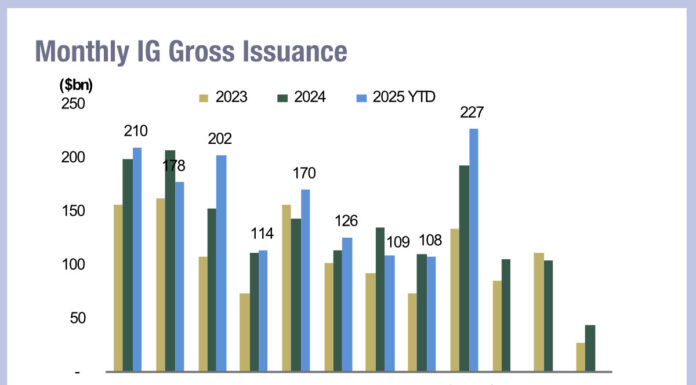Byron Cooper-Fogarty, CEO, Neptune Networks

The fixed income market continues to evolve at a pace I’ve not previously experienced in my 30 years in the industry. ETFs, ESG, algos, portfolio trading, aligned to a greater use of technology, are a few of the advancements that have materially changed fixed income since Neptune launched in mid-2016 . Directly linked, the landscape for fixed income market data is also rapidly evolving, presenting both challenges and opportunities for market participants. We will explore the importance of fixed income market data, the key trends shaping this space, and strategies for the buy-side to effectively navigate this dynamic environment.
The importance of fixed income market data
In line with the overall evolution in the market, accurate and timely market data has become even more critical for buy-side investors, traders, and analysts to make informed decisions, manage risk, and capitalize on investment opportunities in fixed income. Real-time market data is no longer the preserve of the sell-side or trading, it provides insights that enhances collaboration within the investment process, ahead of order generation. Improved collaboration between traders and portfolio managers enables a more opportunistic approach and the use of liquidity optimisation to assess which bonds to buy or sell.
Key trends shaping the fixed income market data landscape
- Increasing complexity: with increased evolution the fixed income market is becoming more complex. As a result, market participants require sophisticated data analytics tools to navigate this complexity and extract actionable insights from vast amounts of data. This is not a budget friendly exercise but crucial nonetheless.
- Regulatory changes: Regulatory reforms, such as MiFID II and Dodd-Frank, have introduced new reporting requirements and transparency standards for fixed income markets, as well as create new datasets. Whilst TRACE is well established in the US, Europe continues to await the CTP. Market participants must adapt to these regulatory changes and ensure compliance with reporting obligations to maintain transparency and integrity in the market.
- Rise of electronic trading: Electronic trading platforms continue to grow, albeit new competition is struggling to impact incumbents. Increased automation and trading volumes means increased data and increased reliance on quality data. On the back of this, market data providers are leveraging technology to deliver real-time data feeds, analytics, and trading tools to meet the demands of electronic and algorithmic trading (we have grown to over 30,000 algo axes per day) and enhance market liquidity. The buy-side does need to be aware of the cost aspects of this trend. Looking at equities, exchanges can have margins in excess of 70% on market data. This is great for those businesses but less so for investors and risk takers, where high data costs bite into increasingly squeezed margins.
Strategies for navigating the fixed income market data landscape
- Invest in advanced data analytics: the buy-side should leverage advanced data analytics tools, including machine learning and artificial intelligence in due course, to analyse large datasets, identify patterns, and predict market trends. This is easier said than done, and leaning on key partners in this space will provide cost effective solutions. For example, Neptune has seen a large uptake from buy-side clients of our direct FIX and REST API connectivity. This allows clients to build internal landscapes, without logging into multiple systems, particularly for portfolio managers.
- Embrace data aggregation: Integrating data from multiple sources, such as market data feeds, trading platforms, and internal systems, provides a comprehensive view of the fixed income market and enables better decision-making. Data aggregation platforms enable seamless data flow across systems and improve data accuracy and consistency. EMS is making progress in fixed income, however it can be an expensive option if only used for aggregation. Likewise, OMS vendors have been making progress in this space.
- Stay abreast of regulatory changes: it goes without saying, staying informed about, and planning ahead, regulatory developments in fixed income is mandatory. By monitoring regulatory changes and adapting their data management practices accordingly, market participants can mitigate compliance risks and, be prepared to utilise new datasets that regulation unveils, sometimes unwittingly.
The fixed income market data landscape is evolving rapidly, driven by increasing complexity, regulatory changes, and technological advancements. The buy-side must embrace innovation, leverage advanced data analytics tools, and stay abreast of regulatory developments to effectively navigate this dynamic environment. By harnessing the power of market data, investors, traders, and analysts can make informed decisions, manage risk, and seize opportunities in the ever-changing fixed income market. The good news is that clients need not do this alone. Partnering with the right firms, such as Neptune, OMS and EMS vendors can make the landscape less daunting.
©Markets Media Europe 2025












